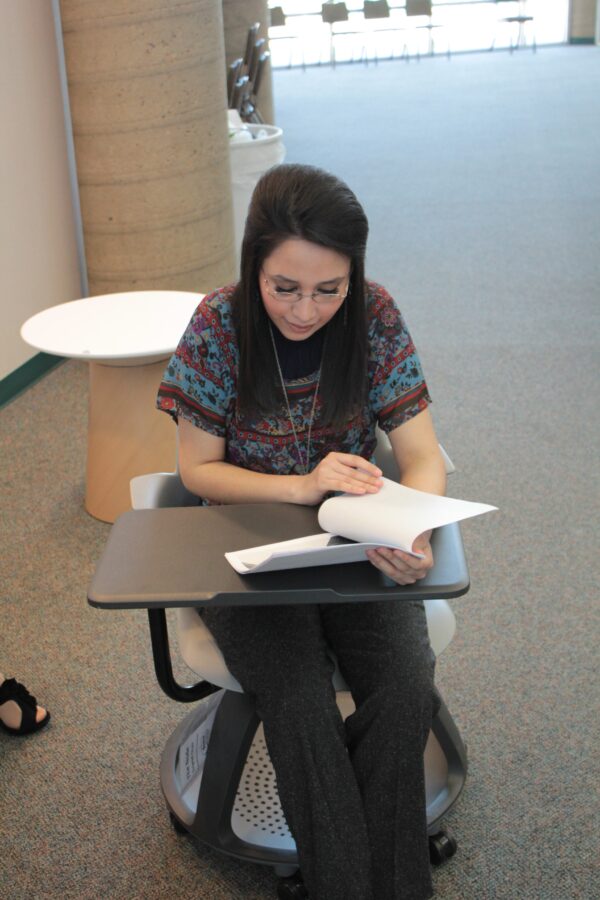
March 28, 2012
By Chad Fewell | Ranger Reporter

Amarillo College has done what it can in light of budget cuts to keep classrooms up-to-date with the latest in technology.
AC is looking at another way to modernize the classroom: the new Node desk.
Most of the older classrooms on AC campuses still have traditional wooden desks and chairs. The Node desk, made by Steelcase Education Solutions, is designed to be mobile and flexible.
The wheels on the desk-chair combination allow students to easily move from lecture-based mode to a team-based, group mode.
“The universal design and functionality of the desk is remarkable, allowing for several options in managing the classroom efficiently,” said Mary Clare Munger, chairwoman of the education and child development department.
The Node has a flexible seat with simple adjustments, which is designed to keep students comfortable in a variety of postures.
An open seat design offers easy access for more than the typical student; it also allows for larger students and students with disabilities.
Casters lend mobility for quick, easy transitions between classroom modes. A base under the chair keeps backpacks and personal belongings out of the aisle.
A swivel seat keeps open sight lines between the student and the instructor, the whiteboard and other students.
There also is an adjustable desktop, non-handed and large enough to support digital and analog resources.
Some students already have been given a chance to test the new chair and share their feedback with faculty and staff.
“The new desk is way more comfortable than the old wooden desks we have in our class,” said Noah Hightower, an equine business and industry major.
“The work area is on a swivel, which is better than the stationary style on the older desks.”
Research has shown that new technology in the classroom allows students a more interactive learning experience.
Some modern classrooms are shifting from a lecture-based structure to a more interactive curriculum, and technology no longer is limited to whiteboards or projectors. Most classrooms are designed for passive, one-way learning – tight rows of desks and chairs that inhibit movement and interaction and instructors confined to the front of the room, where there are few opportunities to connect with students.
The Node desk allows teachers to set up classrooms in multiple ways, which allows more opportunities to work in groups without rearranging furniture as well as easier movement and interaction.
“We were hopeful that we could build a culture with the ability to walk around with the technology instead of having it anchored to one place,” said Casey McGee, coordinator of the library learning commons.

Leave a Reply